Sessions
Course Credits & Hours
Week 1 – Aug10-17:
11.0 European CME credits (ECMEC®)
11.0 Contact Hours
Week 2 – Aug17-24:
12.0 European CME credits (ECMEC®)
12.0 Contact Hours
Credits granted by the European Accreditation Council for Continuing Medical Education (EACCME®).
Course Fees
$495 CAD for Physicians & Dentists
Principal Target Audience
Physicians & Dentists
International Target Audience
All qualified physicians and dentists within the EU and UK
Download Session Schedule
Sessions are listed below in alphabetical order by title.
DENTAL


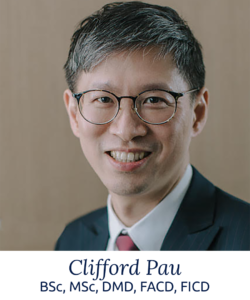
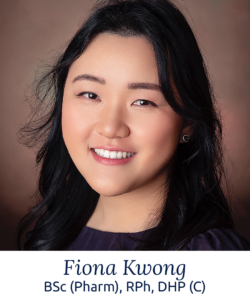
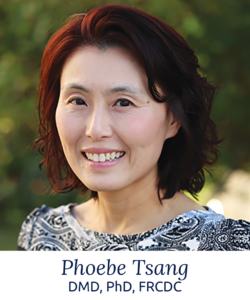
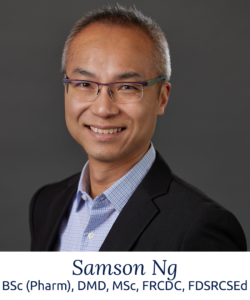
Cure It All with Antibiotic Prophylaxis: Can You Rxist the Temptation? | Clifford Pau & Fiona Kwong
Cure It All with Antibiotic Prophylaxis: Can You Rxist the Temptation?
In 2021, AHA updated the recommendation on antibiotic prophylaxis regimen for bacterial endocarditis. Recommendations on antimicrobial agents for preventing and treating infections are evolving. In this course, we will cover the various classes of antibiotics, the latest recommendations on their use with a focus on dental surgeries and implants, and the strategies to approach patients with “penicillin allergies”.
- Review recent updates of antibiotic prophylaxis and treatment indication in dentistry.
- Discuss applications of antibiotic therapy for common dental infections.
- Understand the pharmacology of antibiotics and compare their efficacy, drug interactions, and adverse reactions.
- Identify the signs and symptoms of a true drug allergic reaction and discuss management strategies for patients with penicillin allergy
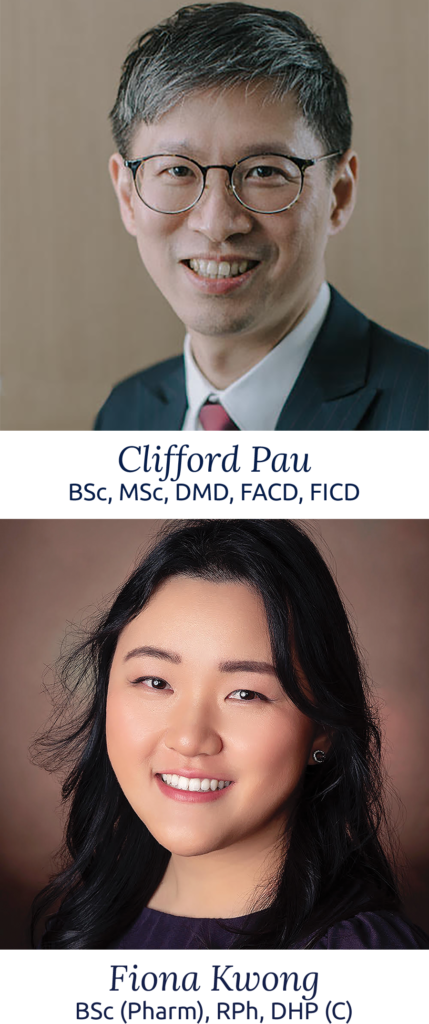
Dental Implications of Orofacial Clefting | Angelina Loo
Dental Implications of Orofacial Clefting
This presentation outlines multidisciplinary and interdisciplinary team care in patients with facial clefting from prenatal diagnosis to the complex and long term care provided by dental practitioners. Attendees will gain insight on the dental findings so commonly associated with facial clefting and the expected treatment outcomes.
Learning Objectives:
- Understanding of Team Care in the management of patients with Cleft and Craniofacial differences.
- Understanding the effect of Infant care in babies born with facial clefting.
- Outline the dental findings associated with children with facial clefting.
- Highlight the importance of coordinated care in the provision of dental treatment by pediatric dentists, orthodontists, oral surgeons and restorative dentists.
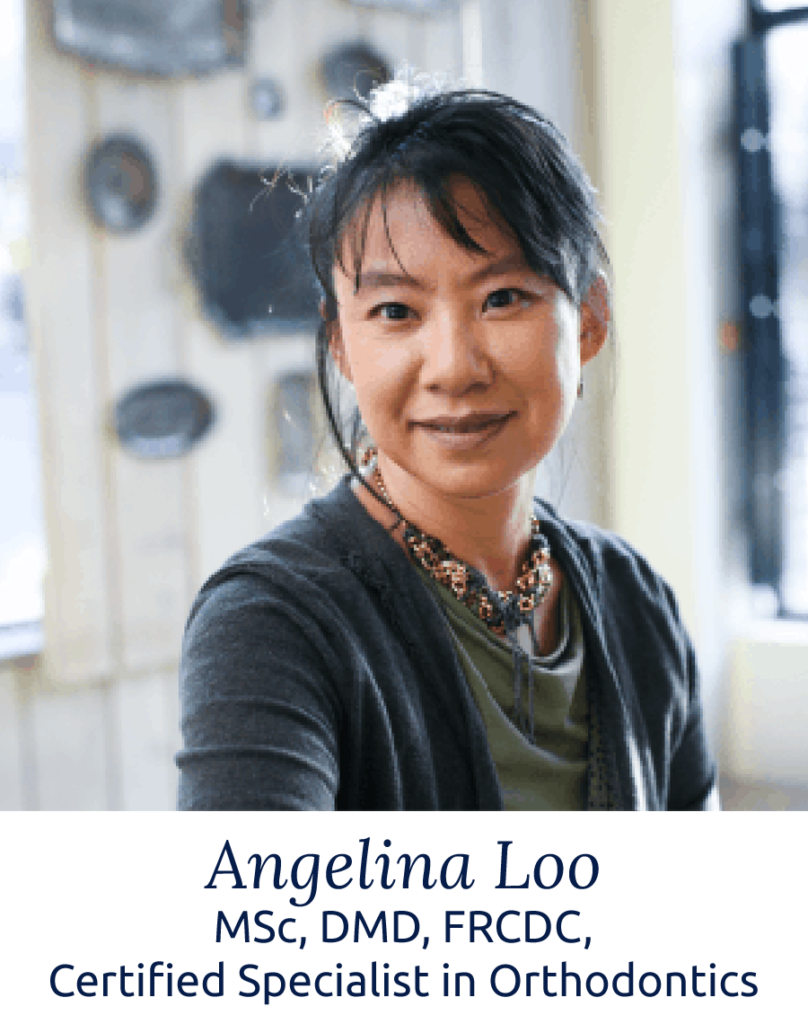
Lumps & Bumps and Beyond: Mastering the Fundamentals | Samson Ng
Lumps & Bumps and Beyond: Mastering the Fundamentals
Please join us for this interactive seminar designed to review oral lesions and dental therapeutics that oral care providers commonly encounter in a community practice. This seminar will reinforce the chair-side techniques for head & neck and intra-oral examinations. Techniques for written and photo documentation of oral lesions will also be discussed. The visual presentation and hands-on demonstrations of adjunctive evaluation tools will definitely make these topics interesting and educational. Topics include common benign oral lesions, the uncommon but need-to-know lesions, and microbial infections other then yeast.
Learning Objectives:
- Learn to consolidate the clinical technique of performing an extra-oral and intra-oral soft tissue examination.
- Learn to diagnosis and treat non-odontogenic oral lesions commonly identified in a community setting.
- Recognize oral lesions/entities that should be ‘red flagged’, and discuss the proper initial management.
- Learn to improve your record keeping for both patient care and integrity of your work, should it come into question.
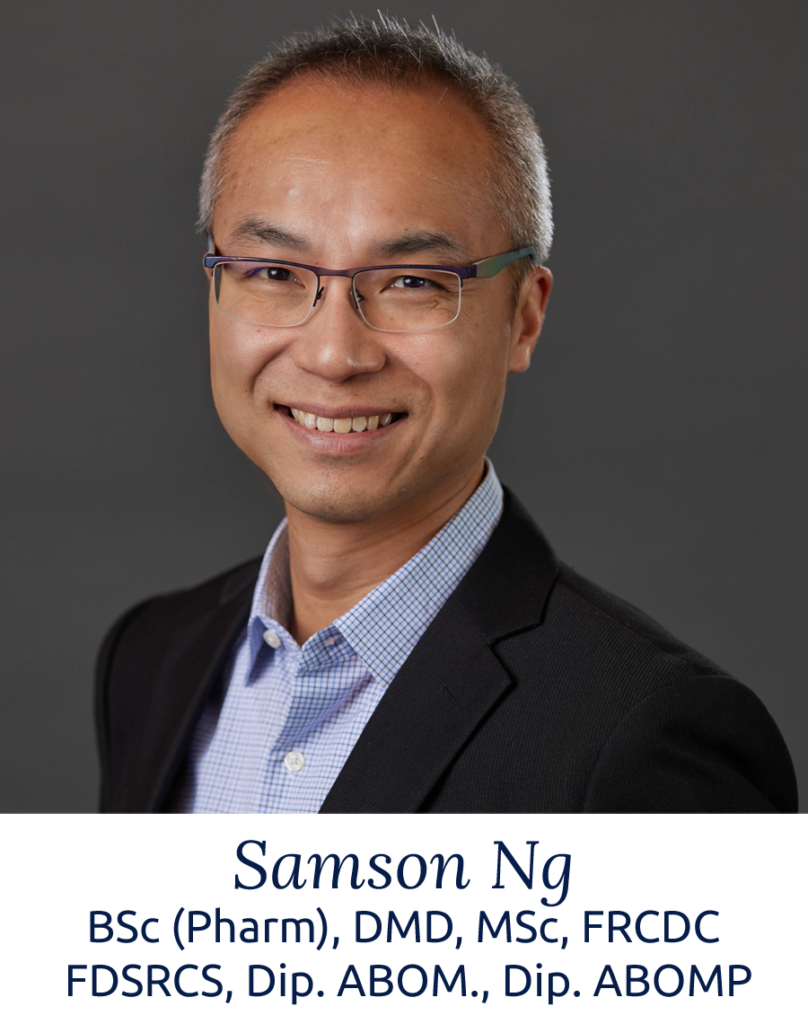
Orthodontic Considerations in the Surgical Rehabilitation of Patients with Orofacial Clefting | Angelina Loo
Orthodontic Considerations in the Surgical Rehabilitation of Patients with Orofacial Clefting
Orofacial clefting is the most common craniofacial anomaly and defines the dentofacial deformities affecting a patient’s self image. Facial and dental esthetics are among our patients’ primary reasons for undergoing facial reconstruction. This presentation outlines the orthodontic management and surgical treatment in the cleft patients’ rehabilitation approaching adulthood.
Learning Objectives:
- Review of facial and dental esthetics as perceived by professionals and laypersons, versus our patients’ expectations.
- Highlight the effect of congenitally missing teeth on orthodontic and surgical treatment planning.
- Outline orthodontic and surgical treatment planning in balancing the dental occlusion with facial esthetics and patient expectations.

Paediatric Dental Treatment: Crowns/Fillings/Extractions | Carla Cohn
Paediatric Dental Treatment: Crowns/Fillings/Extractions
This Continuing Dental Education (CDE) lecture equips dental practitioners and health care practitioners with essential knowledge for comprehensive dental treatment in young children, encompassing intra-coronal composite restorations, prefabricated paediatric crowns, pulpal therapy, and extractions. The course addresses material selection, order of operations, and quadrant dentistry principles. This lecture is valuable for any dentist caring for children, whether in a traditional practice or an operating room setting. Additionally, it provides insight for dentists and healthcare practitioners into the significance of multi-disciplinary patient care, particularly for those with conditions such as cleft lip/palate. By the end of this lecture, participants will have gained the knowledge and practical skills necessary to provide high quality and comprehensive dental treatment to young children. The course emphasizes evidence-based practices, material science considerations, and efficient procedural sequencing to enhance the overall experience for both the dental practitioner and paediatric patients.
Learning Objectives:
- Master Material Selection: Evaluate and choose appropriate dental materials for intra-coronal composites, prefabricated paediatric crowns, pulpal therapy, and extractions in paediatric patients.
- Streamline Order of Operations: Develop a systematic approach for the sequential execution of paediatric dental procedures, emphasizing efficiency and logical planning.
- Apply Quadrant Dentistry Principles: Implement quadrant dentistry strategies to optimize comprehensive treatment planning and enhance procedural efficiency in paediatric dental care.

Paediatric Vital Pulpal Therapy for the Primary Dentition | Carla Cohn
Paediatric Vital Pulpal Therapy for the Primary Dentition
This Continuing Dental Education (CDE) lecture delves into essential aspects of pulpal therapy for primary teeth, covering indirect pulp therapy, direct pulp treatment, and pulpotomies. The goal of vital pulpal therapy for primary dentition is to preserve the health and integrity of teeth and their surrounding tissues. Modern dental materials have revolutionized treatment approaches, providing dental professionals with more predictable and effective means to address pulpal involvement. In this course, we will explore the diagnosis of suitable cases, various treatment methods, and the use of contemporary materials. Clinical cases will be shared, and step-by-step procedures and techniques will be discussed.
Learning Objectives:
- Master the Diagnosis of Primary Dentition Pulpal Health: Develop proficiency in accurately diagnosing the pulpal health of primary teeth, identifying candidates for vital pulpal therapy.
- Distinguish Between Different Vital Pulp Therapy Treatments: Gain insight into the various vital pulpal therapy treatments, including indirect pulp therapy, direct pulp treatment, and pulpotomies. Differentiate when each treatment is most appropriate based on clinical scenarios.
- Acquire Proficiency in Pulpal Therapy Techniques: Learn and apply effective techniques for vital pulpal therapy in primary dentition. Understand the step-by-step procedures, incorporating contemporary materials for improved predictability and success in clinical practice.

Taming the Worry Dragon – Behaviour Guidance | Phoebe Tsang
Taming the Worry Dragon – Behaviour Guidance
As we get our children to go outside and stay active, dental trauma is inevitable.
The outcome of traumatic injuries, especially when an adult tooth is hurt, is largely dependent on timely and immediate management of the traumatized tissue. You can make a difference if you know what to do at the right moment!
- Trauma diagnostic checklist.
- Management of soft tissue injuries.
- Management of permanent and primary teeth injuries.

MEDICAL
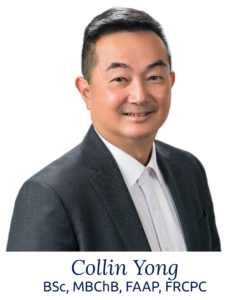
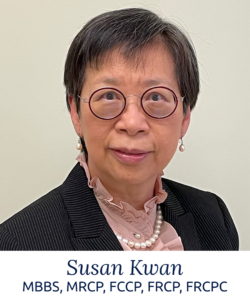
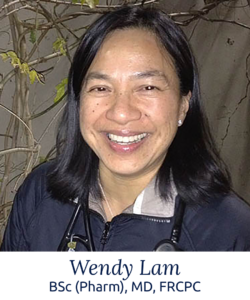


ADHD and Autism in Our Changing World and Changing Attitude | Collin Yong
ADHD and Autism in Our Changing World and Changing Attitude
A look at ADHD and Autism. Are these separate entities and why are they so prominent in our fast paced changing world?
Learning Objectives:
- Outline the distinctive characteristics of ADHD and Autism.
- Can these differences be separated as different entities?
- How does executive function translate to time management?
- Review the differences in pharmacotherapy.
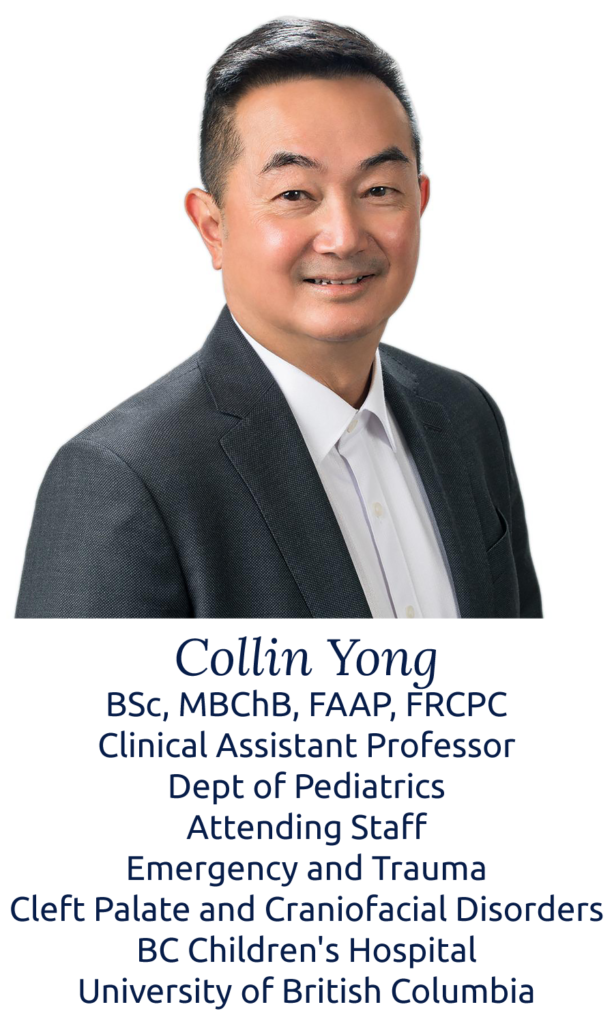
Bend the “Curve” – Survival Cure for Lung Cancer | Wendy Lam
Bend the “Curve” – Survival Cure for Lung Cancer
Lung cancer is a frequent cause of cancer and accounts for a quarter of all cancer deaths. It is a very heterogenous disease and treatment can vary depending on genetic mutations causing the lung cancer. Molecular profiling and biomarker testing is now the norm with use of targeted therapy and immunotherapy leading to improved survival. Another aspect is to diagnose lung cancer early which impacts outcome. Many Canadian provinces have screening programs to find cancer early when treatment is more successful. In this review we will discuss these approaches which have improved survival for lung cancer.
Learning Objectives:
- Describe the current Canadian lung cancer landscape and the histologic types of lung cancer.
- Discuss the stages of lung cancer, the unmet need in early stages and important points relevant to diagnosis.
- Outline the benefits of early lung cancer screening to detect early-stage lung cancer.
- Recognize the paradigm-shifting changes in the treatment of lung cancer.
- Give examples of how therapeutic interventions have changed the clinical outcomes and prognosis of lung cancer.
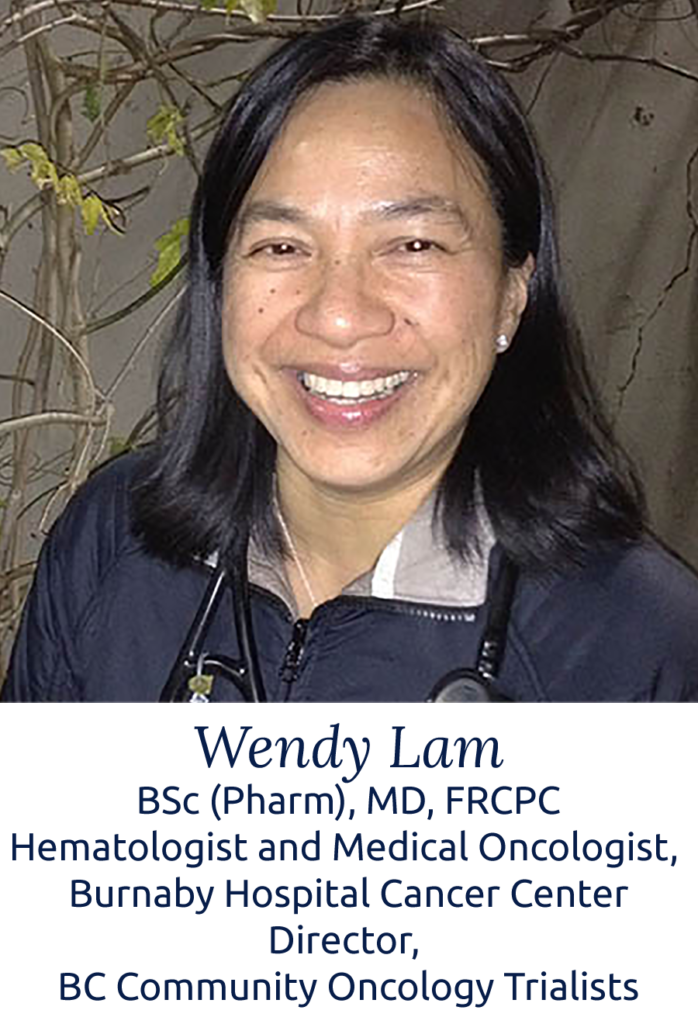
Cleft Lip and Palate: A Team Approach to a Worldwide Condition | Collin Yong
Cleft Lip and Palate: A Team Approach to a Worldwide Condition
Cleft Lip and Palate as a facial anomaly holds more than an esthetic or cosmetic concern. Surgical intervention is the first step – where do we go from here?
Learning Objectives:
- Awareness of Cleft Lip and Palate as a global condition.
- A look at collaborative approach with a multidisciplinary team.
- Early identification and intervention are critical for successful outcome.
- A preventable condition affecting individuals across all socioeconomic and cultural background.

Pneumonia: Diagnosis and Management | Susan Kwan
Pneumonia: Diagnosis and Management
Pneumonia is a common and serious infection of the lungs that can affect anyone. In this seminar, you will learn about the causes, symptoms, diagnosis, treatment, and prevention of pneumonia, as well as the latest research and developments in the field. Expert will share experiences and insights on early management and new treatment for pneumonia. Whether you are a health-care professional, a patient, or a caregiver, this seminar will provide you with valuable information and guidance on how to deal with pneumonia.
Learning Objectives:
- Describe the types of pneumonia. The changing scene with the COVID-19 pandemic.
- Outline the clinical assessment tools and algorithms for the diagnosis.
- Assessment of comorbidities.
- Management and specific treatment.
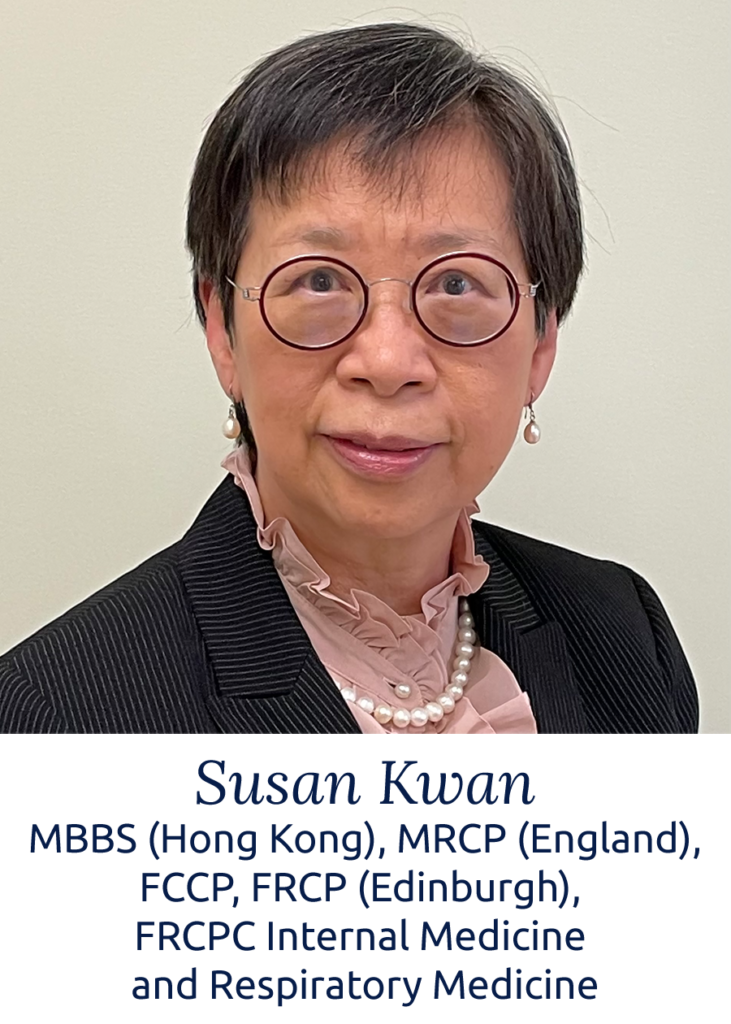
Sleep Medicine that You Need to Know | Susan Kwan
Sleep Medicine that You Need to Know
In recent years, significant advances in sleep medicine have reshaped our understanding of sleep disorders and their implications. Diagnostic investigations have become more sophisticated, allowing for accurate identification of various sleep conditions. Sleep labs equipped with advanced technology, including polysomnograms, have emerged as crucial tools in assessing sleep patterns and disorders. When it comes to treatment, Positive Airway Pressure (PAP) therapy has revolutionized the management of conditions like obstructive sleep apnea. This non-invasive approach helps maintain open airways during sleep, promoting better oxygen flow and improved rest. However, the risks of leaving sleep disorders untreated, particularly obstructive sleep apnea, are far-reaching. Beyond fatigue and reduced quality of life, untreated sleep apnea can lead to increased cardiovascular risks, hypertension, diabetes, and cognitive impairments. As advances continue to unravel the intricate relationship between sleep and overall health, the importance of comprehensive sleep medicine becomes ever more apparent.
Learning Objectives:
- Explain the causes and symptoms of obstructive sleep apnea.
- Identify the risk factors and complications of obstructive sleep apnea using reliable sources and data.
- Demonstrate how to diagnose obstructive sleep apnea using a polysomnography test or a home sleep apnea test kit.
- Discuss the available treatment options for obstructive sleep apnea, such as continuous positive airway pressure (CPAP), oral appliances, surgery, or lifestyle changes.

Treatment of CLL with Novel Agents, Not Chemotherapy | Wendy Lam
Treatment of CLL with Novel Agents, Not Chemotherapy
Chronic lymphocytic leukemia (CLL) is one of most frequent types of leukemia representing 1% of all cancer cases. Many patients present with asymptomatic disease and may not require treatment. With progression of their CLL, mainstay of treatment is with chemoimmunotherapy – FCR with fludarabine, cyclophosphamide and anti-CD20 monoclonal antibody, rituximab, showing improvement in overall survival and progression free survival. More recently, treatment has dramatically changed following demonstration of improved outcomes with targeted therapies such as Bruton kinase inhibitors, ie. ibrutinib, acalabrutinib, and zanubrutinib as well as BCL-2 inhibitor, ie. venetoclax, in combination with anti-CD20 monoclonal antibody. In this review, we summarized and discussed existing evidence for use of these targeted agents in CLL patients requiring treatment.
Learning Objectives:
- Review Chronic Lymphocytic Leukemia (CLL) as disease.
- Evaluate key scientific data in CLL.
- Assess the impact of these data on management of CLL.

We Look After Our Patients, Who Looks After Us? | Collin Yong
We Look After Our Patients, Who Looks After Us?
In a fast and demanding world of modern medicine, doctors are trained to be self-sufficient, independent and knowledgeable, entrusted with the well-being of their patients. Govern by strict regulations to prevent errors, doctors are expected to provide care effortlessly and tirelessly. However amidst the pressure and expectation, the question arises: who takes care of the well being of the doctors?
Learning Objectives:
- Understand the importance of prioritizing self-care and well-being in the medical profession, recognizing the impact of stress and burnout on personal health and professional performance.
- Explore effective strategies and resources for promoting resilience, coping mechanisms, and self-awareness among doctors to mitigate the negative effects of high-pressure environments and demanding work schedules.
- Identify practical steps and interventions that can be implemented to foster a culture of support, compassion, and mental health awareness within the medical community.


EMBARKATION – AUGUST 10, 2024